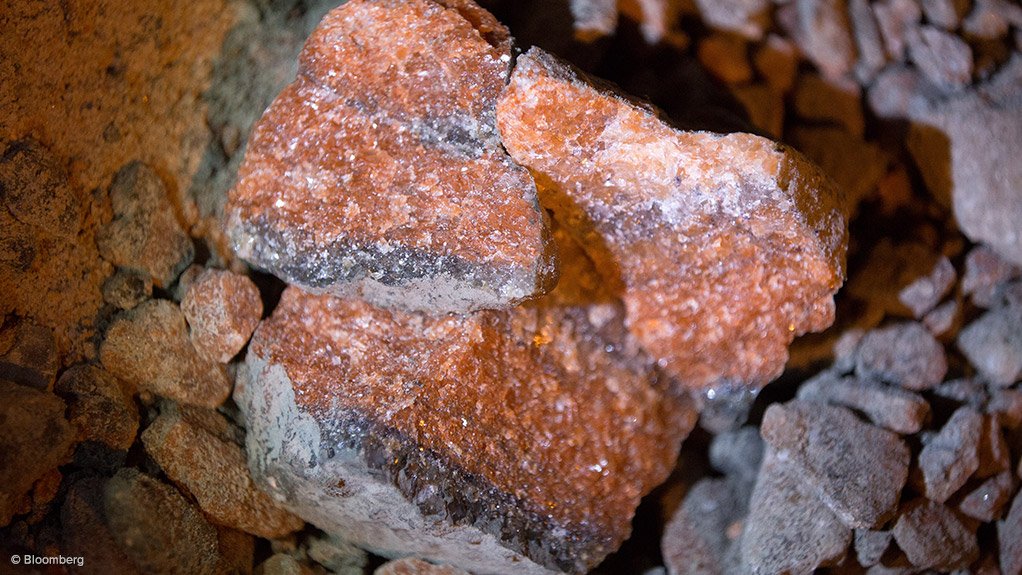
Photo by: Bloombeg
PERTH (miningweekly.com) – Potash developer Potash West has again improved the economics of its proposed Dinner Hill project, in Western Australia, doubling the mine life and increasing the net present value (NPV) by 14%.
A previous economic model of the project had estimated an NPV of around A$331-million, with the internal rate of return projected at 30%.
The economic model projected a capital cost estimate of A$144-million, to deliver a project capable of processing at a rate of 3.8-million tonnes a year, over a 20-year mine life, to deliver 340 000 t/y of superphosphate.
A January scoping study had assumed the production of a single superphosphate (SSP) in a standalone plant for the first five years of operation.
Subsequently, the glauconite concentrate and phosphate rock would be processed in a joint facility to produce potash products, potassium sulphate, potassium magnesium sulphate and merchant grade phosphoric acid, as well as iron-oxide and aluminium sulphite for the remaining life of the project.
The study estimated that the Stage 1 development would require a capital investment of A$136-million, with the staged development allowing for initial cash flow to assist with the expansion capital.
Potash West said on Wednesday that an update to this scoping study had doubled the projected mine life to 40 years, with SSP output of 400 000 t/y based on a processing rate of 3.8-million tonnes a year.
While the projected capital expenditure had increased from A$136-million to A$205-million, the projected NPV increased from A$331-million to A$378-million.
“The significant phosphate potential of Dinner Hill was recognised as we progressed our exploration in early 2015. As we had defined a new resource inventory estimate this year some 100% higher than previously, from new drilling programmes, we took the decision to revise and update the existing scoping study findings for Dinner Hill,” said Potash West MD Patrick McManus.
“The drilling programme has identified a significant high-grade section of the deposit. The high-grade start-up delivers 5.5% phosphorus pentoxide ore for the first five years, 90% higher than the resource average.”
McManus said these factors drove a number of changes to the project plan, most notably the installation of a sulphur burning acid plant, which, while increasing the initial capital costs, substantially reduced operating costs and doubled the mine life.
He added that the findings of the updated scoping study reinforced that Dinner Hill could provide a long-term supply of SSP to Western Australia and the local region.
“As a result, we have commenced the preliminary feasibility study, including new metallurgical testwork, and in addition to the process design for SSP, we will continue to investigate its potential for rock phosphate production,” McManus said.